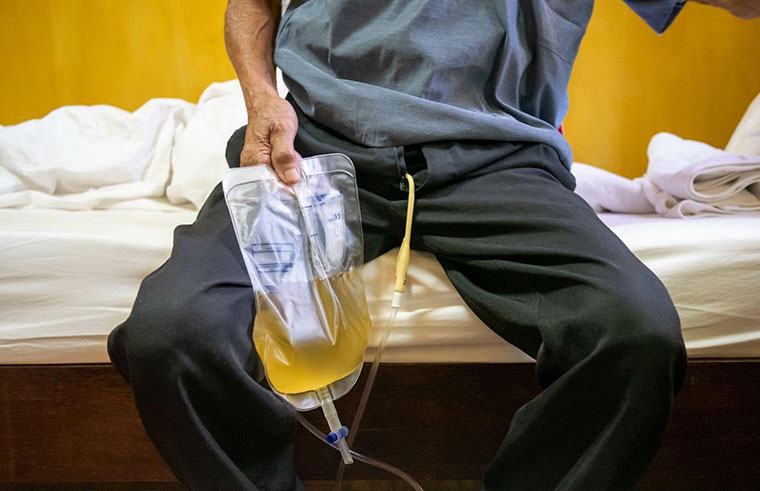Comparing Healthcare Associated Infections Costs (HAIs). Why Is America So Expensive?

HAIs A Comparison Between Japan and the USA
Definition of Healthcare-Associated Infections (HAIs)
Healthcare-associated infections (HAIs), also known as hospital-acquired infections (HCAIs), are infections that develop during the course of medical treatment in hospitals or other healthcare settings.
Introduction
They typically appear 48 hours or more after hospital admission or within 30 days after receiving medical care, such as surgery. HAIs are among the most common adverse events in hospitalized patients, along with adverse drug reactions and surgical complications. According to the Centers for Disease Control and Prevention (CDC), nearly 1.7 million patients in the U.S. contract HAIs annually, meaning 1 in every 17 affected patients dies due to these infections. Simple preventative measures, such as hand hygiene using alcohol-based hand rubs, have been shown to reduce the spread of HAIs, lower patient morbidity, and cut healthcare costs. The World Health Organization (WHO) has established global guidelines to improve infection prevention through proper hand-washing and hygiene practices.
Overview of Economic and Healthcare Burdens Globally
HAIs impose a significant financial and healthcare burden worldwide. The economic cost of HAIs stems from longer hospital stays, additional treatments, increased medication use, and indirect costs such as lost productivity and premature mortality. Globally, HAIs contribute to an economic loss of billions of dollars each year.
Purpose of Comparing Japan and the USA
This article examines the differences in HAI-related costs, infection rates, hospital stay durations, and economic impact between Japan and the United States. Despite both countries being highly developed with advanced medical technologies, their healthcare systems have distinct structures that influence how HAIs are managed. Key differences include:
-
Hospitalization culture: Japan has significantly longer hospital stays (26.3 days on average), whereas the U.S. has a shorter average stay of 5.5 days.
-
HAI prevalence: Japan has a higher infection rate (9%), compared to 4.5% in the U.S.
-
Cost structure: The U.S. has higher per-day hospitalization costs ($2,833 per day), while Japan has lower daily costs ($500-$800 per day) but longer hospital stays, leading to a cumulative financial burden.
-
Healthcare funding allocation: Japan spends 10% of its healthcare budget on HAIs, nearly double that of the U.S. (5.6%).
By analyzing these factors, this article aims to highlight the economic and healthcare burden of HAIs in both countries and emphasize the importance of prevention strategies to reduce infections, costs, and patient morbidity.
Economic Impact of HAIs
Direct Costs
The financial burden of healthcare-associated infections (HAIs) differs significantly between Japan and the United States due to variations in hospitalization culture and healthcare expenses. Japan has a lower per-day hospitalization cost, averaging $500–$800, but significantly longer hospital stays, with HAIs adding an extra 17.6 days per patient. This results in a total direct cost of $61 billion. In contrast, the U.S. has a higher per-day hospitalization cost, reaching $2,833 per day, yet shorter hospital stays. Despite this, direct HAI costs in the U.S. amount to $10.1 billion annually. Medicare policies further amplify financial strain, as hospitals face penalties for high infection rates.
Indirect Costs
Beyond direct expenditures, HAIs generate massive economic losses. In Japan, lost productivity and additional hospitalization days contribute to costs exceeding $32.1 billion, while premature mortality due to antimicrobial resistance (AMR) results in economic losses of $169.8 billion per decade. The U.S. faces even greater economic consequences, with total indirect costs ranging from $96 to $147 billion annually. Legal expenses, healthcare staff burnout, and reduced quality of life further exacerbate the financial burden in both nations. These costs highlight the urgent need for robust infection control measures to mitigate long-term economic damage.
Healthcare System Burden

The healthcare burden refers to the financial, social, and resource strain caused by the prevalence of diseases and conditions, impacting individuals, families, and healthcare systems. It includes direct medical costs, lost productivity, and the pressure on healthcare resources, often exacerbated by chronic conditions and aging populations.
Japan
Japan experiences a higher HAI infection rate, affecting 9% of hospitalized patients, nearly double the U.S. rate. The country also struggles with prolonged hospital stays—averaging 26.3 days, with HAIs extending hospitalization by an additional 17.6 days. The cumulative impact is immense, with an estimated 22.95 million additional hospitalization days due to HAIs, costing approximately $32.1 billion. To combat this issue, Japan allocates 10% of its national healthcare budget to managing HAIs.
USA
The U.S. maintains a lower HAI infection rate of 4.5% but faces significant economic challenges. The average hospital stay is 5.5 days, with HAIs increasing this by 5.9–9.6 additional days per patient. While direct HAI costs reach $10.1 billion annually, total economic losses—including lost productivity and premature deaths—surpass $147 billion. Medicare reimbursement policies impose financial penalties on hospitals with high infection rates, further intensifying the economic strain.
Both countries bear a heavy healthcare burden due to HAIs, emphasizing the importance of preventive measures such as hand hygiene, antimicrobial stewardship, and improved infection control policies to reduce costs and enhance patient outcomes.
Where Is the Economic Burden Greater?
In the USA, the economic burden of healthcare-associated infections (HAIs) is particularly high due to steep treatment costs, with hospitals bearing significant expenses—around $2,833 per day of hospitalization. Additionally, strict Medicare policies increase the financial pressure on hospitals, which face penalties for poor infection control practices. Indirect costs, such as lost productivity and premature deaths, contribute to a staggering economic impact of up to $147 billion annually.
In contrast, Japan, while having lower per-day hospitalization costs ($500–$800), faces a significant cumulative burden because of long hospital stays, averaging 26.3 days, often extended by HAIs. Japan allocates 10% of its national healthcare budget to address HAIs, far exceeding the 5.6% spent in the USA.
Despite the differences, both countries bear a massive economic burden from HAIs, highlighting the urgent need for effective prevention strategies to alleviate long-term financial strain.
Importance of Prevention and Cost Savings
The importance of prevention in addressing healthcare-associated infections (HAIs) cannot be overstated, particularly in reducing the financial and patient burden. In Japan, improving infection control practices could potentially save up to $169.8 billion over the next decade. By reducing hospital stay durations through more effective infection management, Japan can alleviate a significant portion of its healthcare costs. Given the average length of hospitalization in Japan, cutting even a few days from each stay can yield substantial savings. Proactive measures, such as improving hand hygiene, implementing robust surveillance systems, and increasing staffing levels, would enhance infection control and significantly reduce costs.

In the USA, the financial implications of HAIs are similarly severe. Annual savings could range from $96 to $147 billion if infection control measures are enhanced. The return on investment (ROI) for preventive actions like better hygiene practices and staffing improvements is clear, as these interventions reduce both direct treatment costs and indirect costs like lost productivity and premature death.
Both countries can benefit greatly from investing in prevention, which offers a favorable cost-benefit ratio. The financial and healthcare system burdens caused by HAIs are substantial, but these can be mitigated with thoughtful, targeted actions. Prevention not only reduces costs but also improves patient outcomes and overall healthcare quality, making it a key strategy for sustainable healthcare systems in both Japan and the USA. By focusing on proactive measures, the long-term financial and patient benefits far outweigh the initial investment in prevention.
Conclusion
Both Japan and the USA face significant economic and healthcare burdens due to healthcare-associated infections (HAIs), though the cost structures differ between the two countries. Japan, with its longer hospital stays, and the USA, with its higher per-day hospitalization costs, both struggle to manage the financial strain caused by HAIs. Regardless of these differences, the need for effective prevention strategies is clear.
Prevention measures, such as improving infection control practices, enhancing hand hygiene, and increasing staff training, offer a cost-effective solution for both countries. By investing in these strategies, hospitals can reduce the duration of hospital stays, lower infection rates, and ultimately save billions of dollars annually.
Hospital leadership in both Japan and the USA must prioritize infection control investments to reduce the economic and healthcare burdens of HAIs. By focusing on proactive prevention, hospitals can improve patient outcomes, lower treatment costs, and foster a healthier healthcare environment.
For patients struggling with urinary incontinence in hospitals, using absorbent products like QuickChange Wraps can play a crucial role in preventing infections and managing incontinence. QuickChange Wraps not only enhance comfort but also reduce the risk of secondary infections, helping to mitigate the overall burden of HAIs.
For those seeking support, we invite you to purchase a 10 Count Trial Pack here or request a professional-use sample pack for healthcare institutions here.
References:
-
Centers for Disease Control and Prevention. (n.d.). Hospital infection. Centers for Disease Control and Prevention. Retrieved March 19, 2025, from https://search.cdc.gov/search/?query=hospital%20infection&dpage=1
-
Gabay, E. (2024, March 19). A comparison between Japan and the USA healthcare-associated infections. LinkedIn. https://www.linkedin.com/posts/evyatar-gabay-3b6287142_a-comparison-between-japan-and-the-usa-healthcare-associated-activity-7299179020808515585-AvZd
-
Ganguli, I. (2024, September 12). How does health care burden patients? Let me count the days. New England Journal of Medicine, 391(10), 880-883. https://doi.org/10.1056/NEJMp2402138
-
Haque, M., Sartelli, M., McKimm, J., & Abu Bakar, M. (2018, November 15). Health care-associated infections - an overview. Infectious Disease and Therapy, 11, 2321-2333. https://doi.org/10.2147/IDR.S177247
-
Morioka, H., Koizumi, Y., Oka, K., Okudaira, M., Tomita, Y., Kojima, Y., Watariguchi, T., Watamoto, K., Mutoh, Y., Tsuji, T., Yokota, M., Shimizu, J., Hasegawa, C., Iwata, S., Nagaoka, M., Ito, Y., Kawasaki, S., Kato, H., Kitagawa, Y., Goto, T., Nozaki, Y., Akita, K., Shimizu, S., Nozawa, M., Kato, M., Ishihara, M., Ito, K., Yagi, T.; Research Group of Aichi Point Prevalence Survey. (2024, October 8). Healthcare-associated infections in Japanese hospitals: Results from a large-scale multicenter point-prevalence survey in Aichi, 2020. Infection Control & Hospital Epidemiology. https://doi.org/10.1017/ice.2024.130
-
World Health Organization. (2020, November 30). The burden of health care-associated infection worldwide. World Health Organization. https://www.who.int/news-room/feature-stories/detail/the-burden-of-health-care-associated-infection-worldwide
-
World Health Organization. (2021). Building an effective infection prevention and control system in Japan: A historical review. World Health Organization. https://iris.who.int/bitstream/handle/10665/374469/9789290620051-eng.pdf?sequence=1&isAllowed=y


